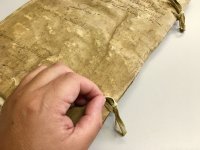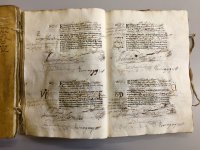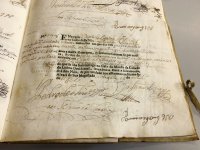Just picking on this old thread: Brazil has just issued a permit for the search of the "Santa Rosa", rumored to have sunk with anywhere from 5 to 26 tons of gold coins and bullion on board.
Last edited:
Follow along with the video below to see how to install our site as a web app on your home screen.
Note: This feature may not be available in some browsers.
Just picking on this old thread: Brazil has just issued a permit for the search of the "Santa Rosa", rumored to have sunk with anywhere from 5 to 26 tons of gold coins and bullion on board.
I couldn't find it online. To whom was the permit issued, Alexandre?





Old thread, but reviving discussion about most valuable unfound wrecks. Regarding the 1605 fleet - were the wreck sites of this fleet located? I know San Jose is known and Colombia is beginning to salvage this year.Those who know me, know that I'm a huge fan of the 1605 fleet. The San Jose might be the richest shipwreck ever, but at an estimated 8 million pesos it cannot compete with the alleged $6-7 millones pesos of the San Roque, Capitana, $6-7 million of the Santo Domingo, Almiranta, and the $2-3 million that the Nuestra Sra. de las Begonias and San Ambrosio carried, the four shipwrecked vessels of D. Fernandez de Cordoba, lost on November 6th, 1605.
The fact that these shipwrecks are intact, probably in shallow waters, and probably within a country, Colombia
Old thread, but reviving discussion about most valuable unfound wrecks. Regarding the 1605 fleet - were the wreck sites of this fleet located? I know San Jose is known and Colombia is beginning to salvage this year.
Anything come of the Santa Rosa 1726 off the coast of Brazil?

What was special about the Manila Galleons that everyone thinks they are the big prize of wrecks? They were larger and much more cargo aboard but wasn't most of the cargo unsalvageable merchandise from the Orient like silk, porcelain, and other commodities? Porcelain might be salvageable depending on condition.Top Three:
Any three lost galleons returning to Acapulco from Manila.
Top Ten:
Any ten lost galleons returning to Acapulco from Manila.
Honorable mentions:
A. Balance of 1715 fleet
B. Cordova's 1605 fleet
Don....
Interesting read and we are back at square one - Serranilla, possibility of British salvaging the wrecks in 1690, Pedro Bank, Misteriosa Bank, Swan Island (Zacarias), deep water and even as far east as the west Bahamas.Check this thread for the 1605 fleet.
Undiscovered treasure galleons
Huguette and Pierre Chaunu, SEVILLE ET L’ATLANTIQUE, vol. IV, p. 200 The San Martin and the San Gregorio returned to Seville in October 1606. Two lines, but what a story. The story of 4 ill fated galleons. SAN ROQUE, CAPITANA SANTO DOMINGO, ALMIRANTA SAN AMBROSIO NUESTRA SENORA DE BEGONA Four...www.treasurenet.com
Manila Galleons
900 to 1000 tons prior to 1700.
E to W
Tons of P of 8 which may not be a major treasure due to the fact of number previously recovered. No Mel Fisher price enhancement.
W to E
To my knowledge all religious gold artifacts recovered in the Caribbean were made in Manila by Chinese gold smiths. However in about 1625-1630 Spanish were worried about the number in Manila so they slaughtered about 25,000 of them. Therefore I believe that MG's prior to 1630 would be worth finding.
Porcelain could be of some value however the issue is that about 200,000 pieces of Ming, Ching or similar pieces have already been found and auctioned off, thereby reducing value substantially.
I would be attracted to a W to E galleon prior to 1630.
Just my opinions after 4 years of research into MG's.